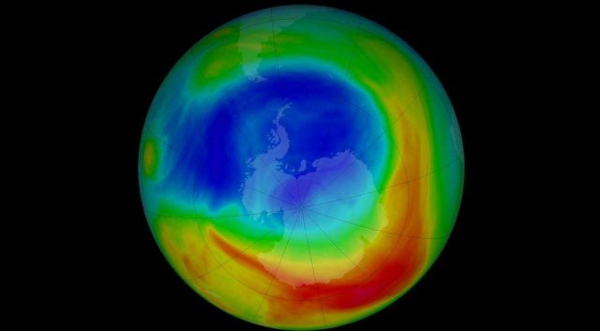There is good news for the Brahmaputra River Valley (BRV). Researchers have found that the concentration of near surface ozone in this region in the North-East corner of India is low compared to the other urban locations in India
Scientists at the Aryabhatta Research Institute of Observational Sciences (ARIES), Nainital an autonomous research institute under the Department of Science and Technology (DST) Govt. of India have evaluated the near surface ozone in the Brahmaputra River Valley (BRV) and found relatively low concentration of Ozone over Guwahati compared to the other urban locations in India. Their present work has been published recently in the journal ‘Atmospheric Pollution Research’.
Tropospheric, or ground-level ozone, is created by chemical reactions between oxides of nitrogen (NOx) and volatile organic compounds (VOC). It usually increases when pollutants emitted by cars, power plants, industrial boilers, refineries, chemical plants, and other sources chemically react in the presence of sunlight, impacting human health.
In the study led by Dr. Umesh Chandra Dumka (Scientist, ARIES, Nainital, India) along with contributions by Dr. A. S. Gautam (Professor at Hemvati Nandan Bahuguna Garhwal University), Dr. Suresh Tiwari (Scientist Indian Institute of Tropical Meteorology, New Delhi Branch) and Prof. Philip K. Hopke (Adjunct Professor, University of Rochester School of Medicine and Dentistry, USA) and Prof. R. K. Chakrabarty (Washington University, USA) and other team members analysed the variability of ozone and other air pollutants over Brahmaputra River Valley region. It also assessed seasonal, day of week, and characteristics of ozone to identify the emission source of ozone and its precursors, especially methane (CH4) and NMHCs, along with study the relationships between the meteorological parameters, ozone and its precursors in a tropical setting.
The examination of nitric oxide, nitrogen dioxide, and ozone concentrations in this study suggested that this site is well influenced by local sources such as adjacent major national highway. During the daylight hours, the site is in or nearly in a photo-stationary state, indicating a low impact of organic species on the ozone concentrations.
Source : PIB
You may also like
-
New Heat-Based Approach To Cancer Treatment Can Reduce Chemotherapy Doses
-
Scientists Take A Major Step Towards Unification Of Classical & Quantum Gravity
-
India Graphene Engineering and Innovation Centre (IGEIC) Under the Vision of Viksit Bharat@2047 Launched
-
New High-Performance Gas Sensor can Monitor Low Level Nitrogen Oxides Pollution
-
Antidepressant Drug can be Repurposed for Treating Breast Cancer
